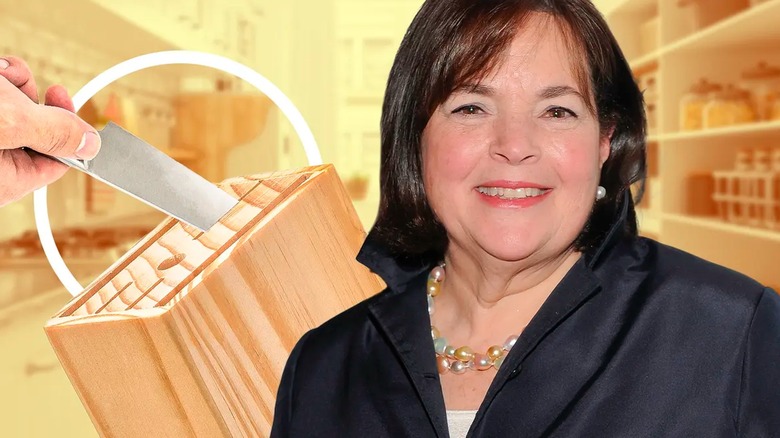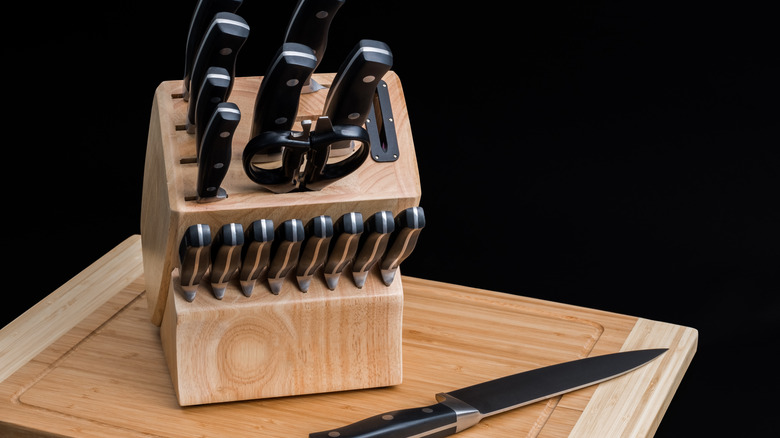Ina Garten's Tip For Keeping Blades Sharp In Your Knife Block
The Barefoot Contessa can always be counted on to come through with ingenious kitchen hacks, whether to help you bake better cakes or whip up delicious plates of pasta. But even after 20 years of doling out advice to her loyal fanbase of home chefs, the star and cookbook author has so many tips up her sleeve that she forgets they are tips and well worth passing on.
Case in point, Garten recently blew the minds of her over 4.2 million Instagram followers when she revealed her secret for preserving her pricey kitchen knives. "It's really important to have sharp knives, and I try not to do things that dull them," she captioned her video post. "I choose knife blocks that hold most of the knives sideways. However, any knives that are held vertically, I have another trick for saving the blade."
In the video, Garten explains that she stores her knives a little differently when using a regular vertical knife block. "If you put it in right side [up], the usual way ... the blade is scraping against the wood," she says, holding a small knife and demonstrating the way the blade hits the wood as it slides into the slot. So, to "save the blade," she places her knives upside down when returning them to the Wüsthof block, which gives them extra room and eliminates the scrape.
Other tips for keeping blades sharp
Garten's method for storing her knives is a smart way to reduce wear and tear on those expensive cutting utensils. But if you're looking for other ways to keep your knives sharp, there are a few other tips to keep in mind. For one thing, you always want to avoid throwing them in the dishwasher, since the wash cycle can ruin the handle and cause the blades to get rusty. Similarly, you don't want them to sit in the kitchen sink to clean up later. To minimize their exposure to soap and water, and keep them in better shape, it's best to wash and dry your knives right after using them.
You also want to consider whether your knife actually needs sharpening, or just some simple honing. As master sharpener Craig Field of Carbon Knife Co. told Tasting Table, "The process of 'sharpening' a blade entails removing a small amount of steel from the cutting edge." To avoid wearing down the blade, he recommends using a honing steel in between sharpenings, in a process that straightens the edge of the blade, ensuring a sharper cut.
But sometimes, a dull blade has nothing to do with how you're handling your knife, but with what sort of cutting board you're using. Field recommends sticking to boards made of softer materials, "like Japanese hinoki, soft rubber, or end grain wood," which absorb the impact of cutting and will keep your knives fully prepared to carve into Garten's famous "Engagement Chicken."

